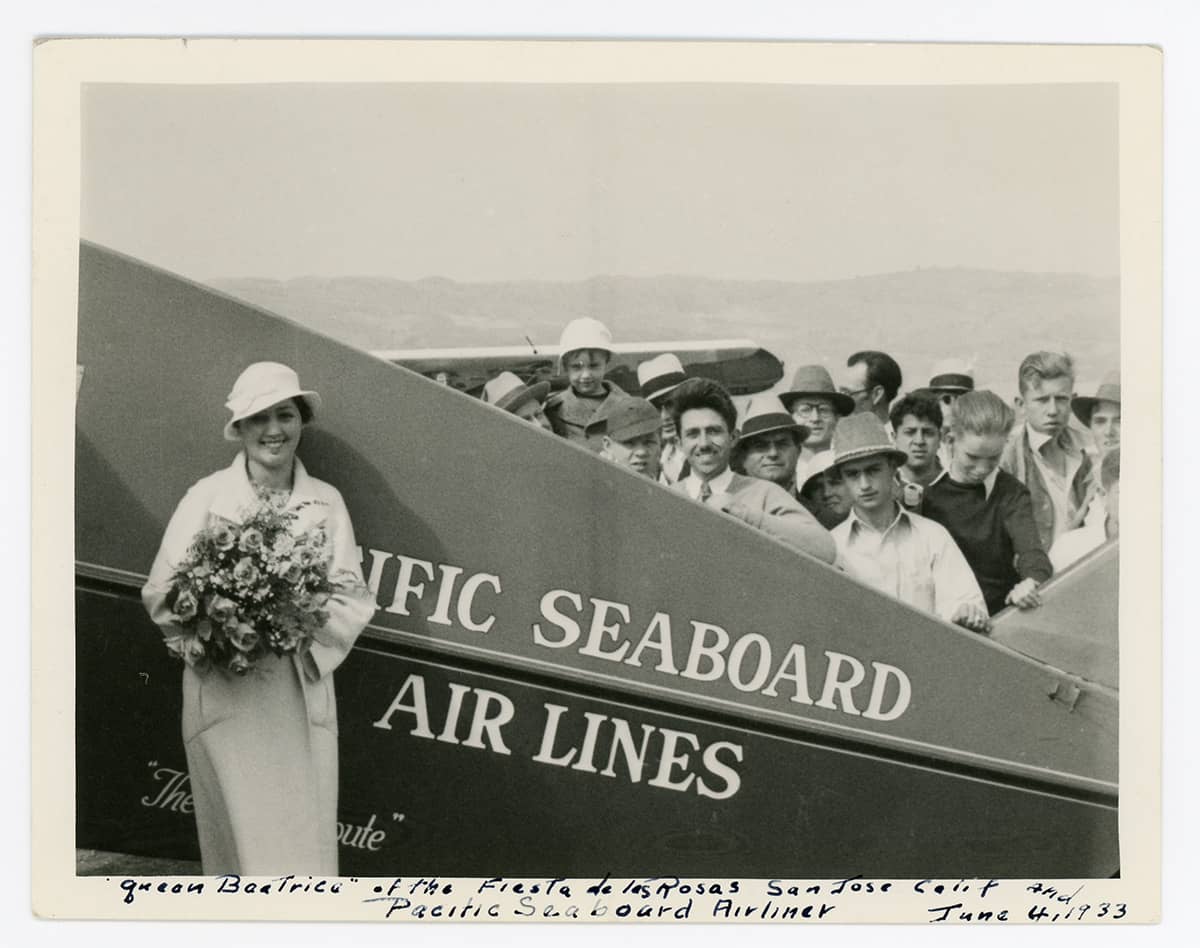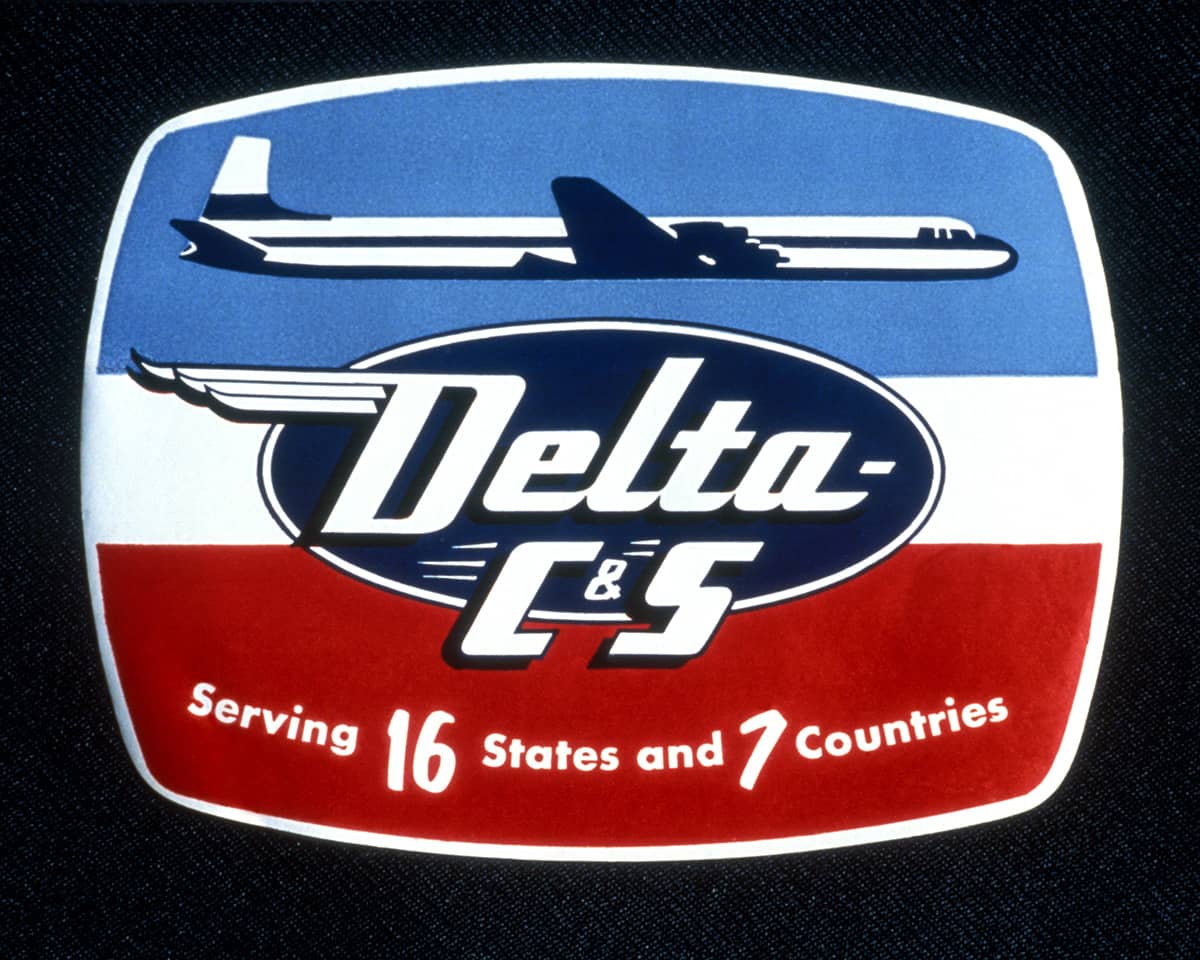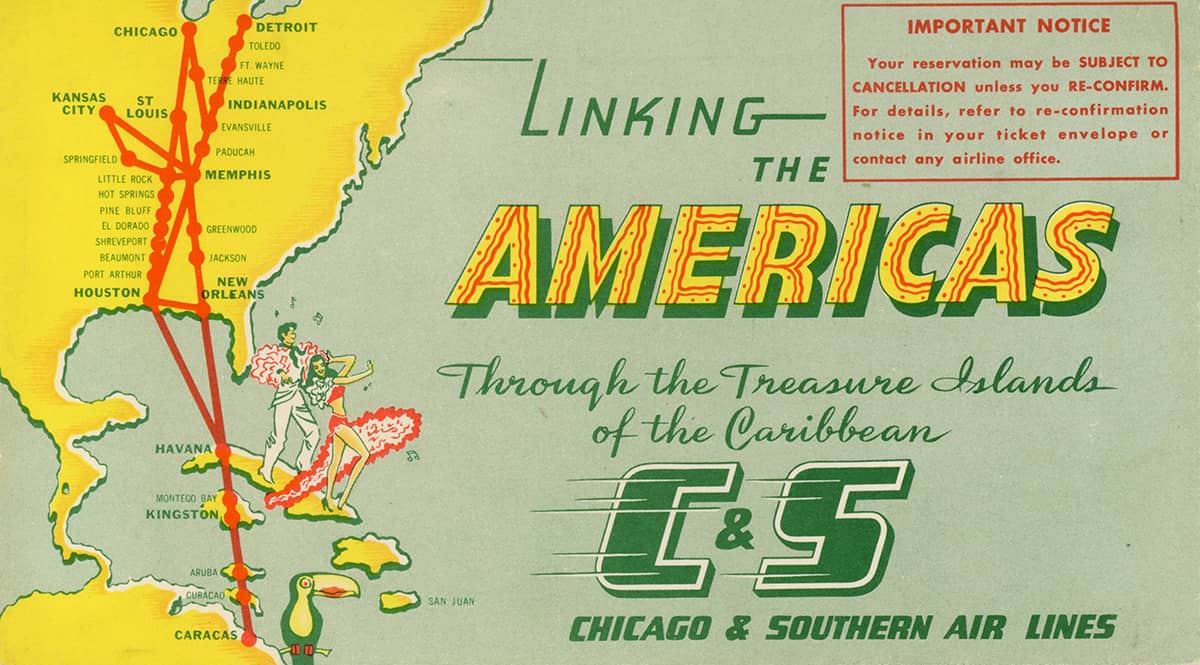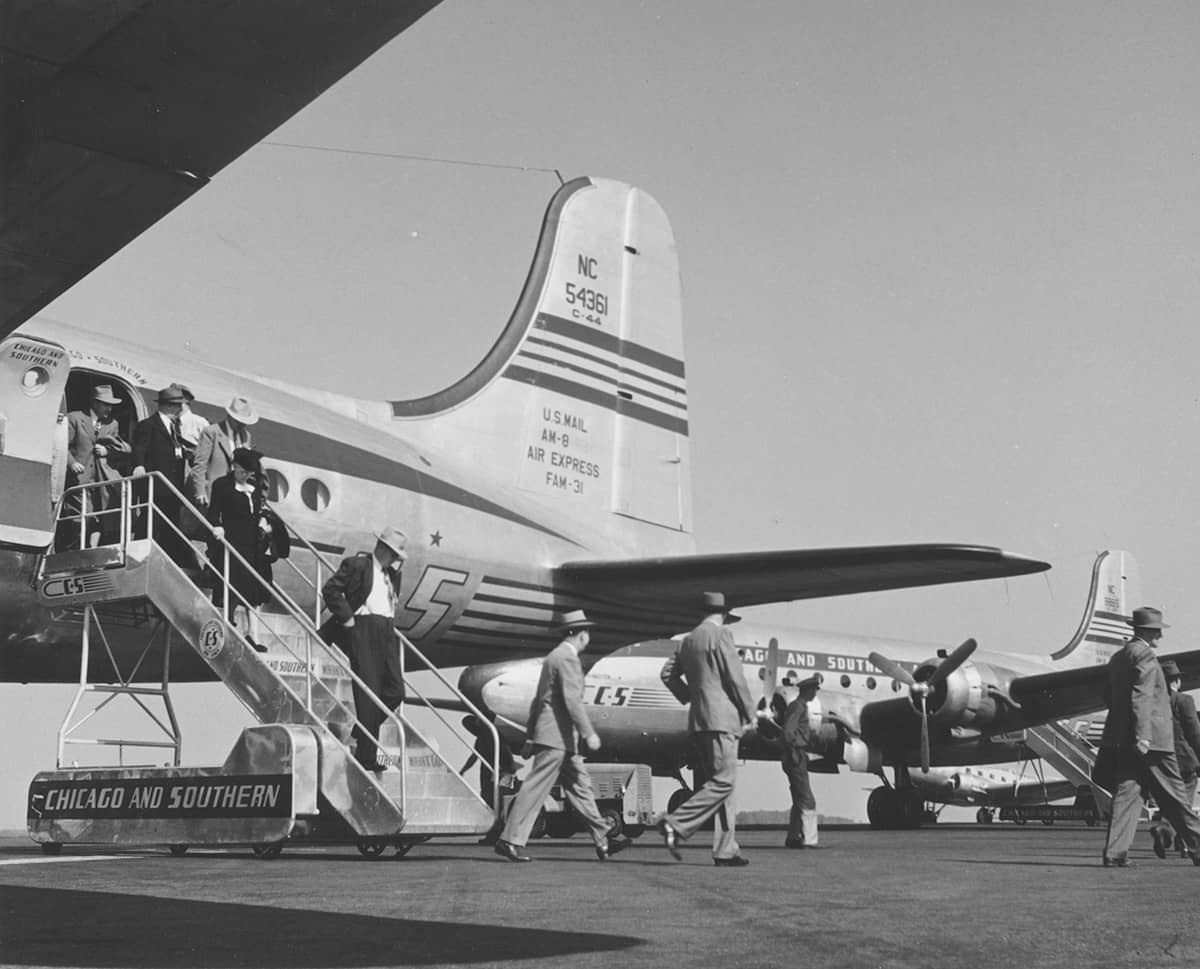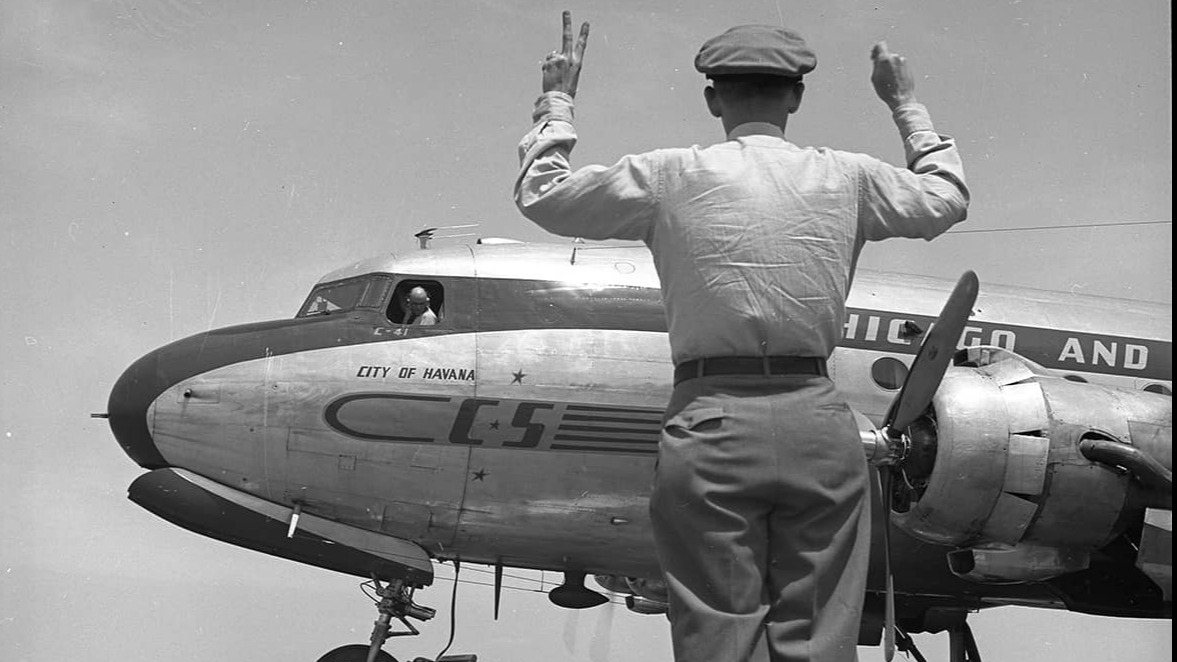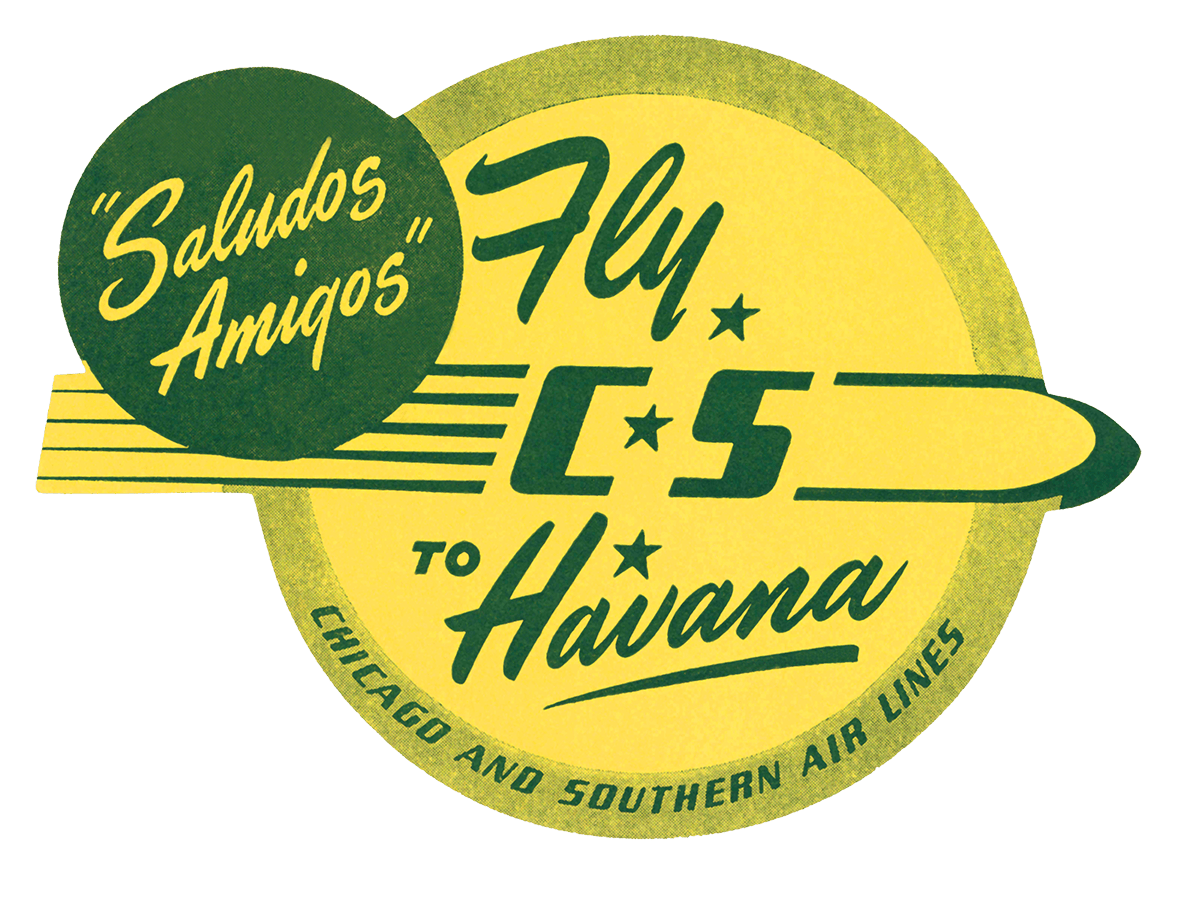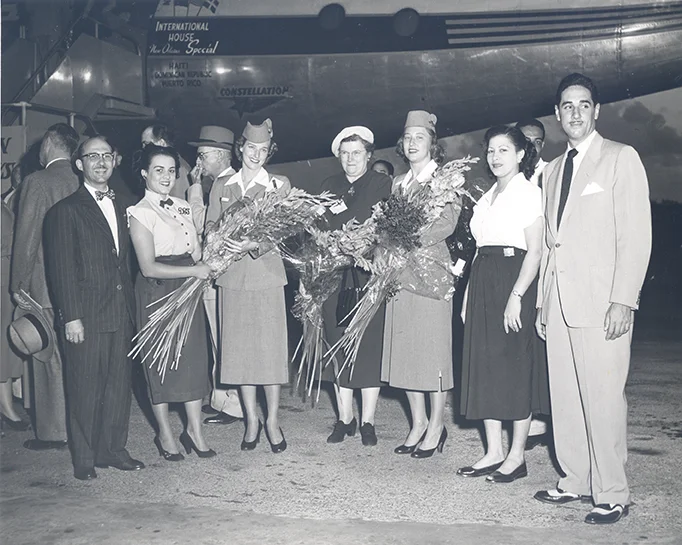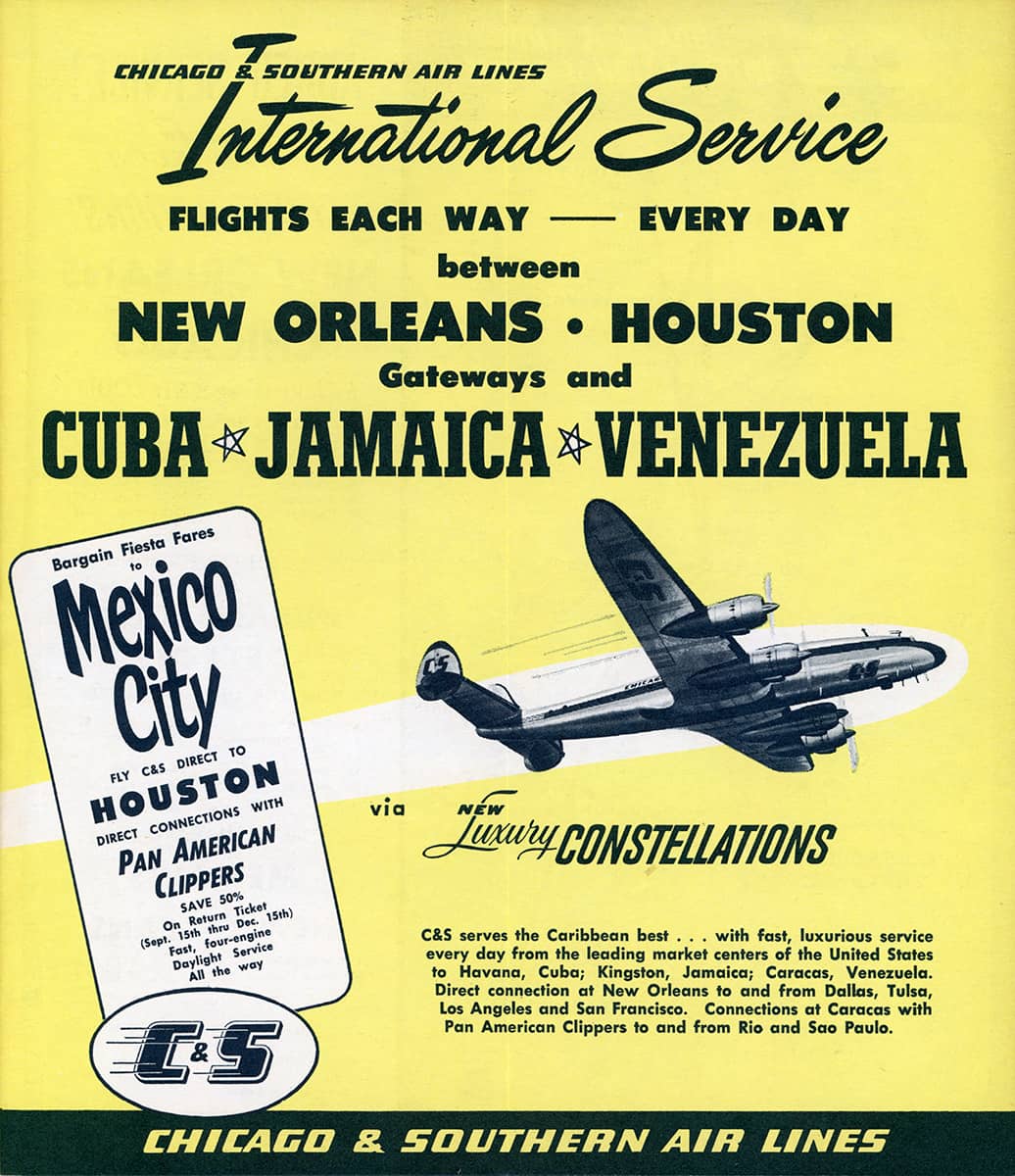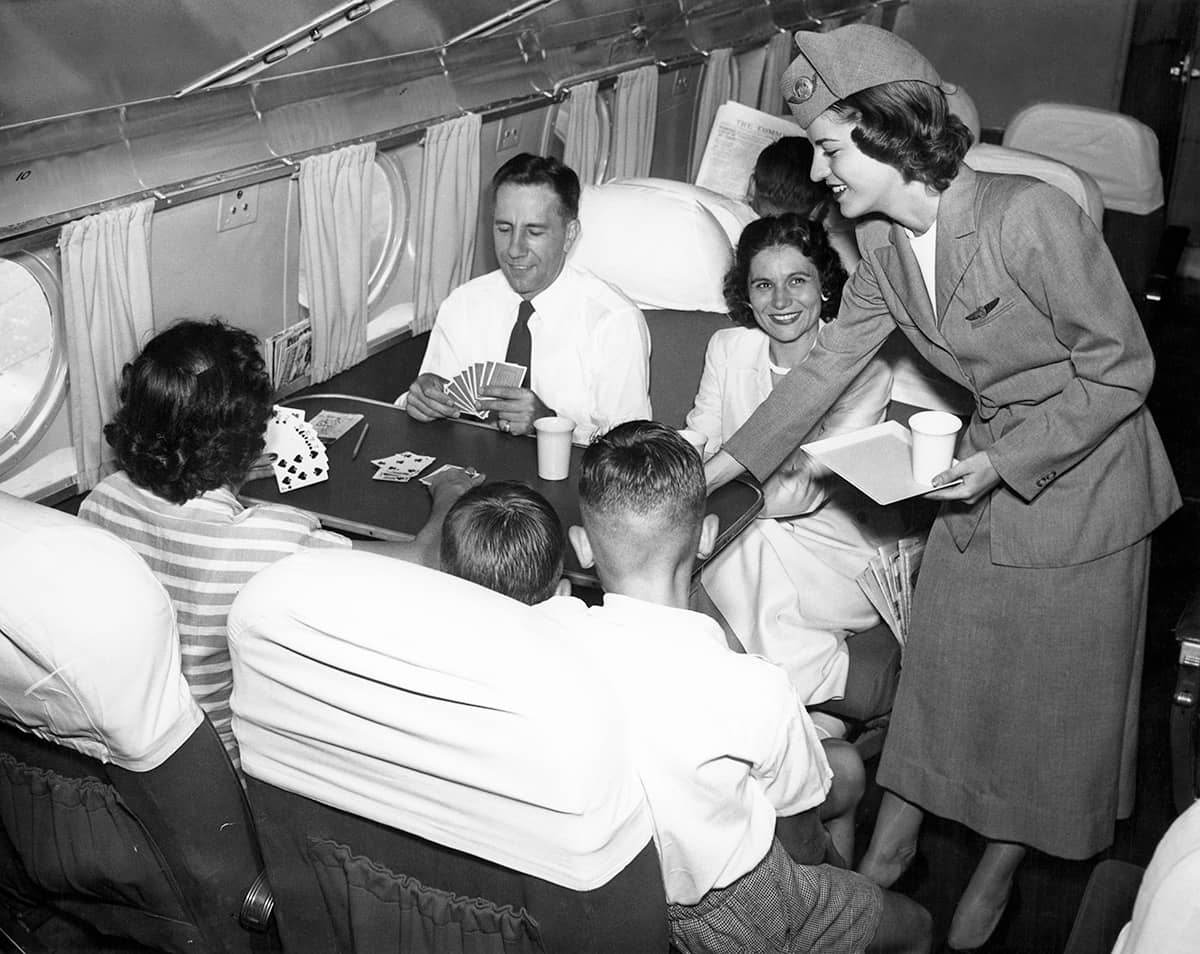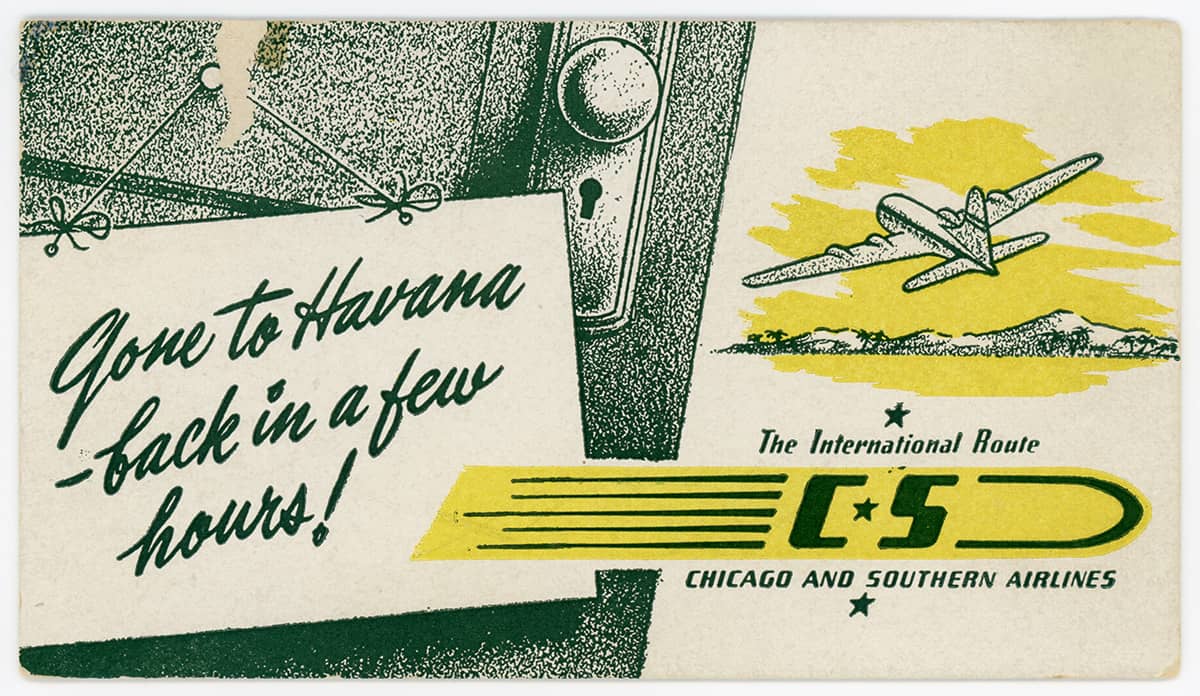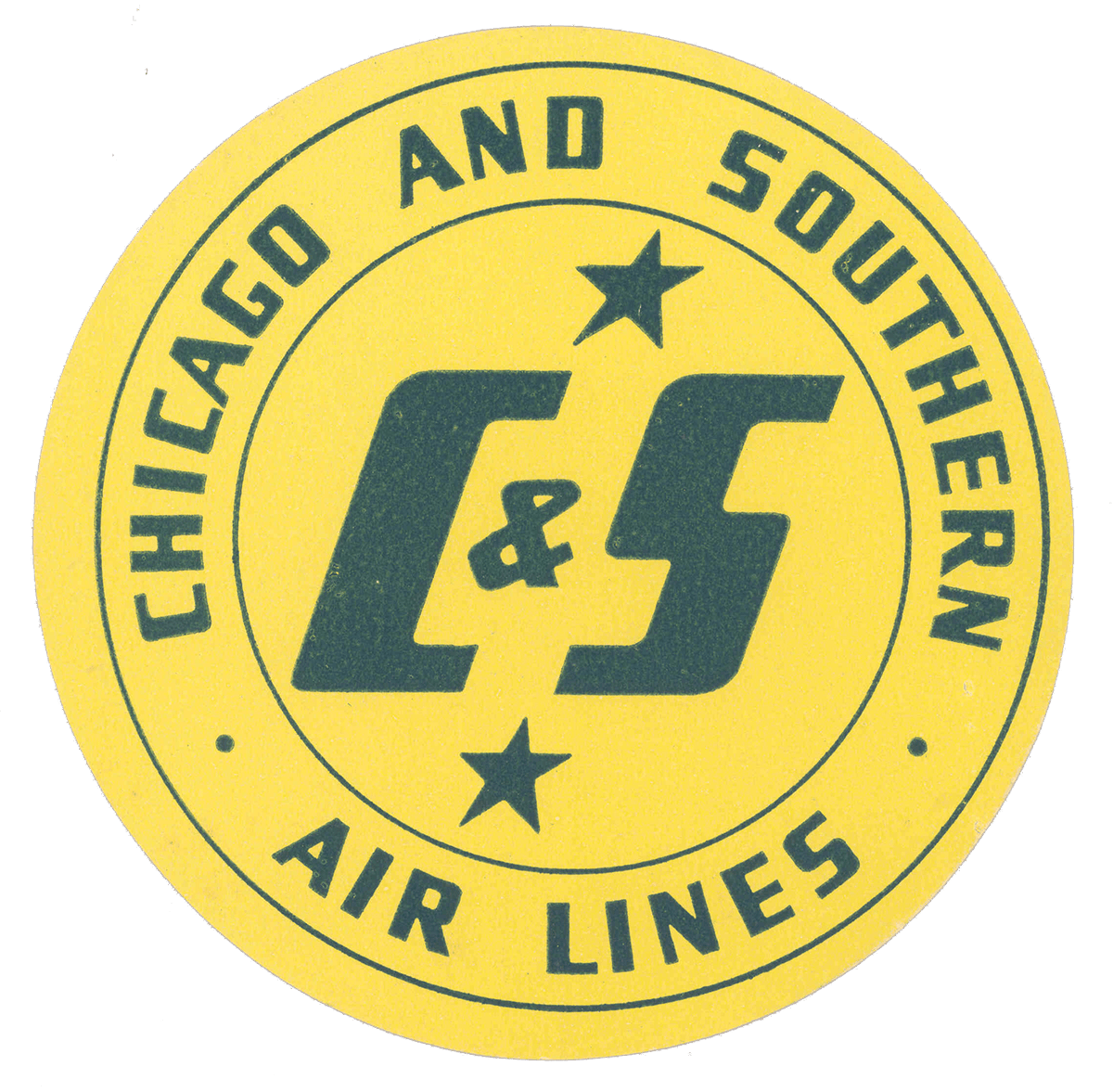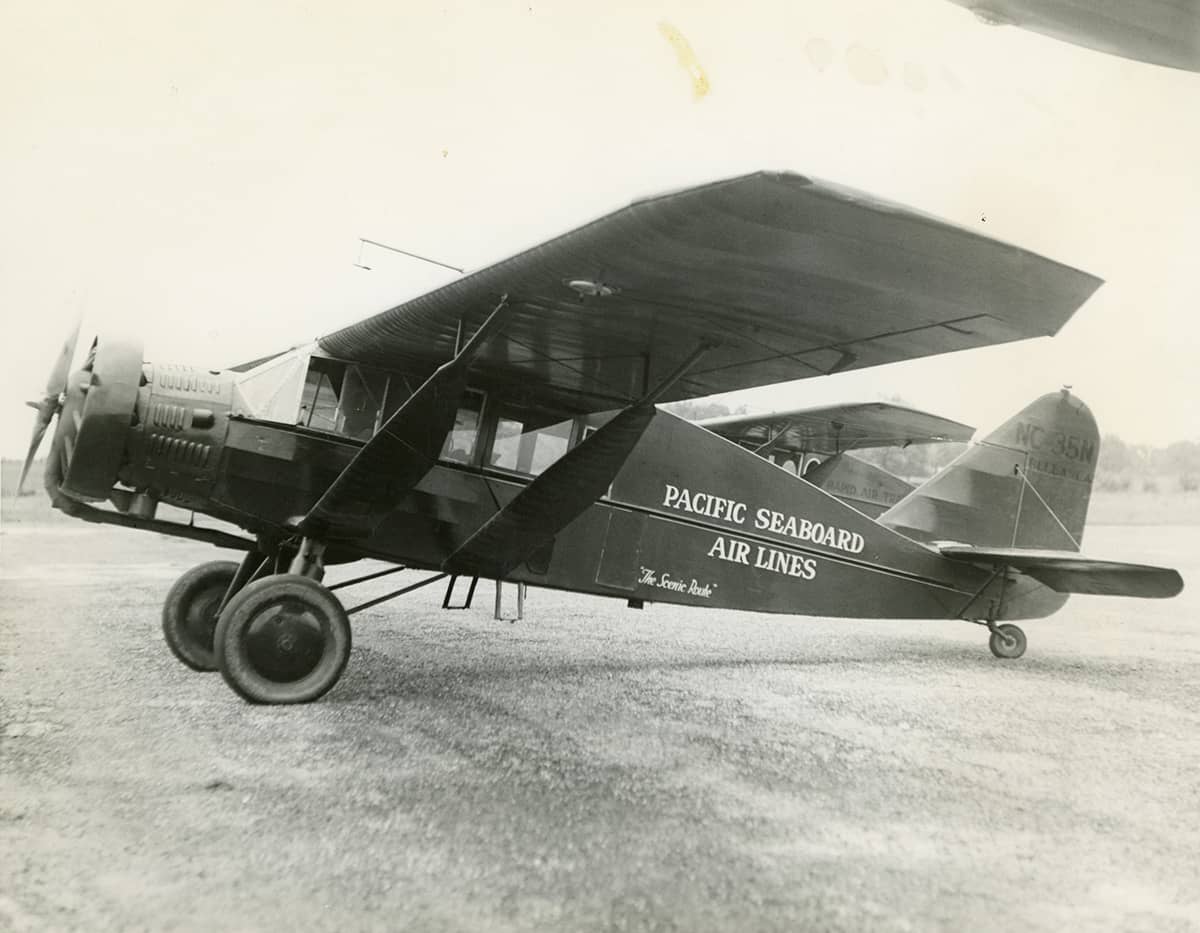
When Memphis, Tennessee-based airline Chicago and Southern Air Lines (C&S) merged with Delta in 1953, its routes brought Delta its first international service—out of gateway city New Orleans to the Caribbean and Caracas, Venezuela.
Twenty years earlier, C&S had started out as a little local airline in California, flying between Los Angeles and San Francisco.
Let's take a look at how C&S grew!
Pacific Seaboard Air Lines made its first flight on June 25, 1933, without benefit of an airmail contract. Flying from Los Angeles along the scenic, coastal route to San Francisco, the airline stopped at Santa Barbara, Santa Maria, Paso Robles, Salinas and Monterey, California. Fares were "3½ cents per mile—cheaper than driving your car."
Pacific Seaboard operated for about a year in California, completing almost 250,000 miles of day and night flying along the mountainous west coast. The airline struggled to meet expenses and was losing money.
In 1934, the U.S. Post Office's call for new bids on all airmail routes gave the airline hope for financial stability. With a bid of 17 1/2 cents a mile—the lowest ever received by the Post Office—Pacific Seaboard won a route from Chicago—New Orleans. With the shift in operations to the Mississippi River Valley, the airline also moved its headquarters to Memphis, Tennessee.
Pacific Seaboard Air Lines inaugurated mail service between Chicago and New Orleans on June 3, 1934. Passengers were first flown over the route on July 13, 1934.
Cities served along the route: Chicago and Peoria, Illinois; Springfield and St. Louis, Missouri; Memphis, Tennessee; Greenwood and Jackson, Mississippi; and New Orleans, Louisiana.
In 1935, the company's name changed to Chicago and Southern Air Lines.
C&S continued to expand service during the 1940s, interrupted by World War II activities. Flights started between Memphis and Houston, Texas, via Shreveport, Louisiana, in 1941. After the bombing of Pearl Harbor, C&S quickly opened a modification center to prepare U.S. Army combat aircraft for immediate use in war zones.
Post war, the airline experienced rapid route expansion. C&S reached the most northern city on its route when it started service to Detroit, on June 1, 1945. New domestic destinations were added in the Midwest and the South—to Arkansas, Indiana, Missouri and Texas—until the end of the decade.
Continuing southward, C&S launched its first international service.
